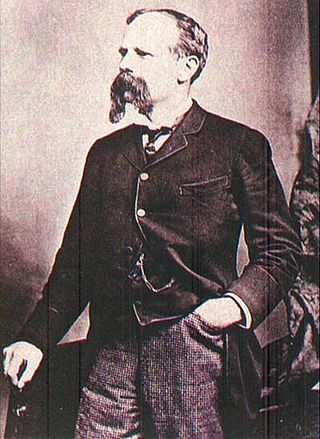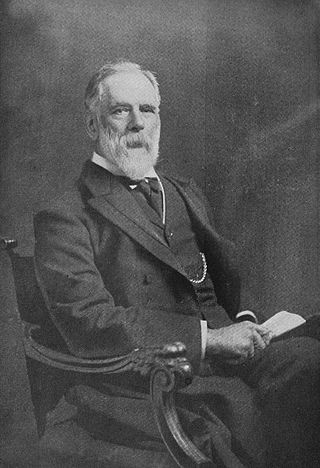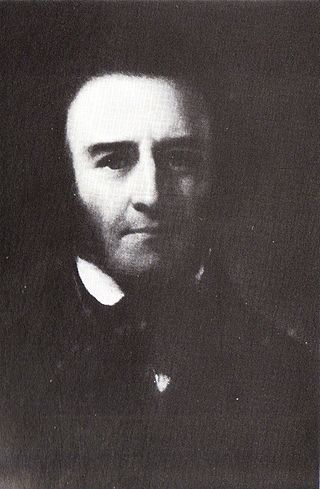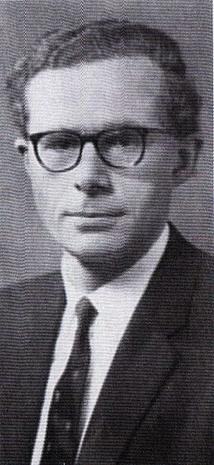Related Research Articles

Sir Benjamin Baker was an English civil engineer who worked in mid to late Victorian era. He helped develop the early underground railways in London with Sir John Fowler, but he is best known for his work on the Forth Bridge. He made many other notable contributions to civil engineering, including his work as an expert witness at the public inquiry into the Tay Rail Bridge disaster. Later, he helped design and build the first Aswan dam.

Sir Thomas Bouch was a British railway engineer. He was born in Thursby, near Carlisle, Cumberland, and lived in Edinburgh. As manager of the Edinburgh and Northern Railway he introduced the first roll-on/roll-off train ferry service in the world. Subsequently as a consulting engineer, he helped develop the caisson and popularised the use of lattice girders in railway bridges. He was knighted after the successful completion of the first Tay Railway Bridge, but his reputation was destroyed by the subsequent Tay Bridge disaster, in which 75 people are believed to have died as a result of defects in design, construction and maintenance, for all of which Bouch was held responsible. He died within 18 months of being knighted.

John Rennie was a Scottish civil engineer who designed many bridges, canals, docks and warehouses, and a pioneer in the use of structural cast-iron.

Sir Alexander Richardson Binnie was a British civil engineer responsible for several major engineering projects, including several associated with crossings of the River Thames in London.
Charles Scott Meik was an English civil and mechanical engineer, and part of a minor engineering dynasty. His father Thomas Meik was also a civil engineer, as was Charles' brother Patrick Meik; collectively, they established a company which became one of the UK's major engineering consultancies.

The Blackwater Reservoir is a reservoir created behind a dam in the mountains above Kinlochleven, Lochaber, Highland, Scotland. The dam is 914 metres (2,999 ft) long, the longest in the Highlands.
Thomas Meik was a 19th-century Scottish engineer.
Sir George Cunningham Buchanan was a British civil engineer particularly associated with harbour works in Burma, Iraq and Bombay, during the early years of the 20th century.

Sir John Wolfe Barry, the youngest son of famous architect Sir Charles Barry, was an English civil engineer of the late 19th and early 20th century. His most famous project is Tower Bridge over the River Thames in London which was constructed between 1886 and 1894. After receiving a knighthood in 1897, he added "Wolfe" to his inherited name in 1898 to become Sir John Wolfe Barry.

William Henry Barlow was an English civil engineer of the 19th century, particularly associated with railway engineering projects. Barlow was involved in many engineering enterprises. He was engineer for the Midland Railway on its London extension and designed the company's London terminus at St Pancras.
Sir William Halcrow was one of the most notable English civil engineers of the 20th century, particularly renowned for his expertise in the design of tunnels and for projects during the Second World War.

Sir John Fowler, 1st Baronet, KCMG, LLD, FRSE was an English civil engineer specialising in the construction of railways and railway infrastructure. In the 1850s and 1860s, he was engineer for the world's first underground railway, London's Metropolitan Railway, built by the "cut-and-cover" method under city streets. In the 1880s, he was chief engineer for the Forth Bridge, which opened in 1890. Fowler's was a long and eminent career, spanning most of the 19th century's railway expansion, and he was engineer, adviser or consultant to many British and foreign railway companies and governments. He was the youngest president of the Institution of Civil Engineers, between 1865 and 1867, and his major works represent a lasting legacy of Victorian engineering.

Brigadier-General Sir Alexander Gibb was a Scottish civil engineer. After serving as Civil Engineer-in-Chief to the Admiralty and Director-General of Civil Engineering at the Ministry of Transport, he established the engineering consultancy firm Sir Alexander Gibb & Partners.

James Meadows Rendel FRS was a British civil engineer.

James Abernethy FRSE MICE was a Scottish civil engineer.
Halcrow Group Limited was a British engineering consultancy company. It was one of the UK's largest consultancies, specialised in the provision of planning, design and management services for infrastructure development worldwide. With interests in transportation, water, maritime and property, the company undertook commissions in over 70 countries from a network of more than 90 offices.

Sir Maurice Fitzmaurice CMG was an Irish civil engineer. He was apprenticed to Benjamin Baker and worked with him on the Forth Railway Bridge before going to Egypt to build the Aswan Dam for which he was appointed both a member of the Ottoman Order of the Mejidiye and a companion of the British Order of St Michael and St George. Following this Fitzmaurice was Chief Engineer to the London County Council and was responsible for the Blackwall, Rotherhithe and Woolwich tunnels. In later life his consultancy advised on docks and harbours across the British Commonwealth as well as the Sennar Dam in Sudan and he was recognised with the prestigious honour of the presidency of the Institution of Civil Engineers for the 1916-17 session.

Sir Alan Marshall Muir Wood was a British civil engineer.
John Gibb (1776–1850) was a Scottish civil engineer and contractor whose work included the construction of harbours, bridges, roads, lighthouses, and railways in the United Kingdom, primarily in Scotland. He was a close associate of Thomas Telford, who employed him on many of his civil engineering projects during the first half of the 19th century.
Asa Binns was a British mechanical and civil engineer. He trained with hydraulic pump and engine makers before becoming a draughtsman. Binns worked for a period at HMS Chatham Dockyard and rose to become head of their civil engineering works. He later worked on the construction of several major docks in London, including for the Port of London Authority. Binns served as president of the Institution of Engineers-in-Charge (1936–37) and the Institution of Mechanical Engineers (1940). He was elected president of the Institution of Civil Engineers in 1946 but died before he could take office.
References
- 1 2 3 4 5 6 Patrick Meik. Grace's Guide. Retrieved: 9 October 2015.
- ↑ Green, John W; Money, Robin A (2013). Exploring the History of Lee-on-the-Solent. Andrews UK. p. 93. ISBN 9781909183322.
- ↑ Rennison, Robert W (1996). Civil Engineering Heritage: Northern England. Thomas Telford. p. 83. ISBN 9780727725189.
- ↑ "City firm engineers a winning bid for Forth Bridge plans". The Scotsman. 19 July 2005. Retrieved 9 October 2015.
- ↑ "Forth Rail Bridge drawings go under the hammer", Bridge Design & Engineering, 12 July 2005. Retrieved: 9 October 2015.